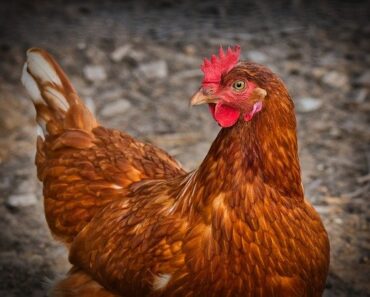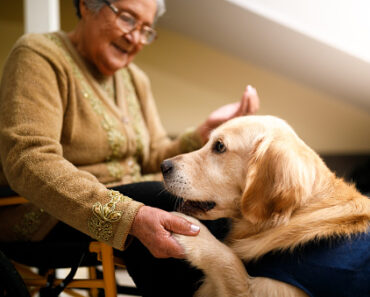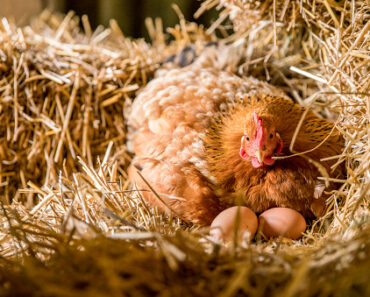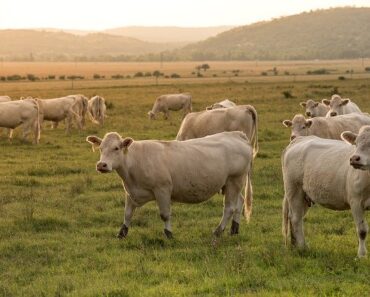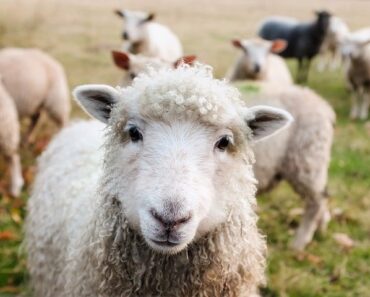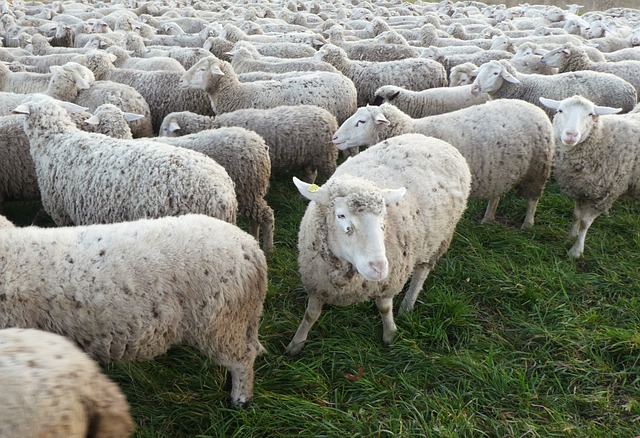
Puberty and cycle
The ewe reaches puberty at an age of between 5 and 12 months. This age is variable according to the breed but also according to the season of birth of the ewe itself. Young ewes can be mated when they have reached 70% of their adult weight. The ewe’s cycle is seasonal, between August and January. It lasts an average of 16 to 17 days.
Heat, ovulation and mating
The signs of heat are very discreet. A ewe in heat will seek the male’s company, allow him to smell her, often wagging his tail to spread his scent. One can also notice a slight congestion of the vulva. The ewe that is not in heat will move away from the ram. Ovulation occurs at the end of the estrous cycle. Mating ideally occurs 9 to 12 hours after the end of estrus (or heat). During most natural mating, the ram will mate the ewe several times to ensure a sufficient quantity of sperm for fertilization. In a flock, one ram is sufficient for several ewes (between 10 and 30).
The ram, on the other hand, has a specific sexual behavior. Here is the sequence of behaviors expressed:
Ano genital sniffing: they are the first direct contact between the ewe and the ram. They are generally of short duration.
“The flehmen” consists of a standing, immobile position of the male, the head in a horizontal position, the neck stretched out and the upper lip rolled up. This phenomenon is not only a sexual behavior but is expressed more intensely during the reproductive period. The duration of the flehmen varies from 10 seconds to one minute.
The solicitations of the females by the males are characterized by an approach with the head turned to the side, movements of a front leg and intense sound emissions. These approaches are repeated and provoke an immobilization of the female in oestrus and, on the contrary, a flight of the female not in heat.
Overlaps are observed mainly when the females are immobile. Their duration and number before mating depends on different parameters such as the efficiency and motivation of the males and the size of the female compared to the male.
Intromission and ejaculation are of short duration. Ejaculation is associated, at the moment of semen expulsion, with a forward movement of the kidney and a backward movement of the head.
Post-copulatory recovery is also called the refractory period. Its duration is variable and depends on the race, the individual and his motivation, but also on other stimuli such as the change of partner. This refractory period is characterized by an almost total absence of movement after ejaculation, which may be followed by food intake.
Gestation
Gestation lasts about 5 months (148 days). However, the length of gestation can be variable, depending on factors such as genetics, age of the mother, number and sex of the fetuses. Ewes frequently have litters of 1 or 2 lambs. However, litters of 3 lambs are not uncommon!
Calving
The birth of the ewe, also called lambing, is preceded by warning signs. A few days before lambing, the vulva changes, it is more oedematous and swollen. In addition, the udders develop, sometimes letting colostrum (=first milk rich in proteins and antibodies) escape. Behavioural changes also exist: ewes going to give birth generally seek to adopt newborn lambs from other ewes. The lambing process is classically divided into 3 phases:
The first working phase, which lasts from 6 to 12 hours. It is composed of all the phenomena that precede the expulsion of the foetus(es), such as dilation of the cervix, uterine contractions, etc…
The second phase of labor corresponds to the expulsion of the fetus or fetuses and lasts from 30 minutes to 1 hour. The contractions intensify, the first pocket of water appears at the vulva and bursts. The head of the lamb progresses into the mother’s pelvis, then the front limbs, the thorax and finally the hind limbs.
During the third phase of labor, uterine contractions continue for 3 to 4 hours, allowing the expulsion of the fetal envelopes: this is the delivery.
First moments of the newborn
Immediately after giving birth, the mother has an exclusive relationship with her lambs. Thus, only the lambs they have given birth to can suckle, the others are violently rejected. Maternal behavior begins at birth: a few moments after the lamb is expelled, the mother licks it by emitting deaf bleats. The licking allows the mother to learn the smell of her lamb, to stimulate its breathing, to dry it and to attract it towards her. The lamb recovers quickly, within 5 minutes after birth. About 20 minutes after birth, it stands up and moves towards the udder. The speed of the first feed is a determining factor in the lamb’s survival, as it allows it to ingest antibodies that are essential to its immunity.
Care of the lamb
The few moments after birth are crucial, so some precautions are to be taken to ensure the lamb’s good health:
As soon as the lamb gives birth, make sure it is breathing properly. If this is not the case, the airways must be cleared and the breathing reflex stimulated by tickling the nostrils or blowing into the nostrils of the newborn.
The umbilical cord must be cut 5 cm from the belly and disinfected with iodine tincture. Indeed, it is the door open to many very serious infections if it is not cleaned.
It is necessary to check that the lamb makes the first feed quickly after birth. Sometimes, the udders of the ewe are blocked with a little wax, it is advisable to clean them to facilitate the suckling of the young. If the lamb does not go to the mother, or if the mother rejects it, you can milk the ewe and then give the milk directly to the young.
In the first hours of life, the lamb is not able to regulate its temperature and is very sensitive to weather conditions. It is important to place it in a dry and warm place, and if necessary to wrap it in a blanket.
Care for the mother
If the birth went well, the mother does not need special care, but her general health should be monitored. She should not be slaughtered and should eat normally. It is important to monitor the expulsion of the placenta and other fetal appendages. If the placenta is not expelled, or if you find that the ewe is not behaving normally, call your veterinarian.
Artificial insemination
It is also possible not to mate with a ram but to use an artificial insemination technique. The ewes are inseminated once or twice using fresh diluted semen straws containing about 400 billion sperm. Currently, fresh diluted semen can only be stored for a few hours. It is also possible to use frozen sperm.
Heat synchronization
For reasons of reproduction management in ewes, heat synchronization methods are sometimes used, the main one being based on the use of progestagens (molecules derived from progesterone). This method consists of three steps:
the insertion of a sponge made of polyurethane foam impregnated with progesterone into the ewe’s vagina,
Intramuscular injection of a hormone dose (PMSG) when the sponge is removed,
control of fertilization conditions (mating or artificial insemination)
The continuation of the reproduction takes place in a way identical to a natural mating.
The products you may need for the :
A ewe pregnancy detector
A bottle for lamb
A multi-bottle bucket

